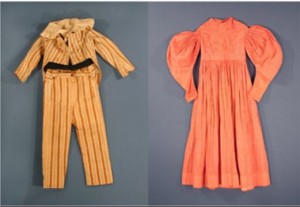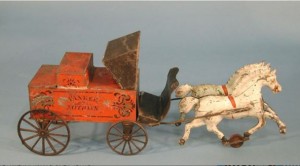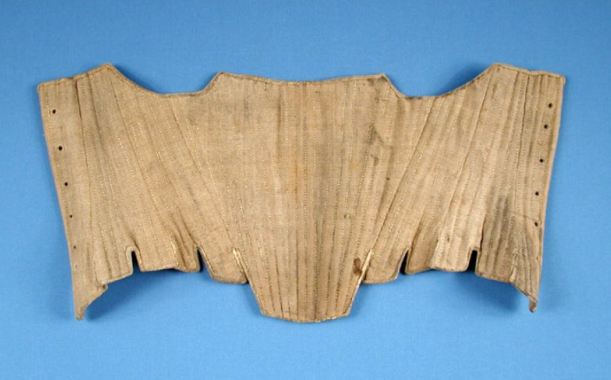By Karen DePauw
During the Colonial Era, children were seen as adults in the making whose clothing and actions mirrored those of their parents. Towards the beginning of the 1800s, a new understanding of children emerged, and childhood was seen as an important stage of development. Children were recognized as different from adults, finally giving them the freedom to just be kids.

Left: Boy’s Suit. About 1812. Right: Girl’s Dress. About 1835 – Connecticut Historical Society
One of the most visible shifts was the change in children’s clothing. Rather than wearing corsets and restrictive garments modeled on those of their parents, toddlers began to wear clothing that allowed them to crawl, run, and explore. Although these clothes still reflected the styles of their times, they provided children a chance to play. Infants, both boys and girls, were still dressed in gowns as it was believed that at this early age gender was not yet important. However, as toddlers, boys began wearing pants with a short jacket or dress on top, giving them a greater sense of mobility, while girls continued to wear dresses in the style of the times, which to some extent still restricted their activity.

Toy Peddler’s Wagon. About 1870. Tin toys, like this peddler’s wagon made by Stevens & Brown in Cromwell, CT, became popular in the mid-19th century as a cheap and durable substitute for wooden toys – Connecticut Historical Society
The idea of play also developed more fully throughout the early 19th century. Instead of participating in adult games and amusements, children began to have their own games and toys specifically developed to help them learn. While small boys and girls continued to wear similar clothing, their toys were very different. Little girls were expected to act out adult roles with their dolls, while boys were encouraged to play more active games with swords, balls, and locomotives. Books of the period included games directly geared toward boys or girls.
During the 1900s, the activities of boys and girls began to merge. Dolls were no longer just for girls and active games were enjoyed by all children regardless of gender. Early in the century, boys began wearing pants at an early age; by the end of the century, pants were acceptable dress for children of both genders. Childhood games and clothing continue to evolve in the 21st century, as the skills needed to function as a successful adult continue to adapt to meet the challenges of a changing world.
Karen DePauw, formerly a Research and Collections Associate at The Connecticut Historical Society.
© Connecticut Public Broadcasting Network and Connecticut Historical Society. All rights reserved. This article originally appeared on Connecticut History | WNPR News
Note: ConnecticutHistory.org does not edit content originally published on another platform and therefore does not update any instances of outdated content or language.









